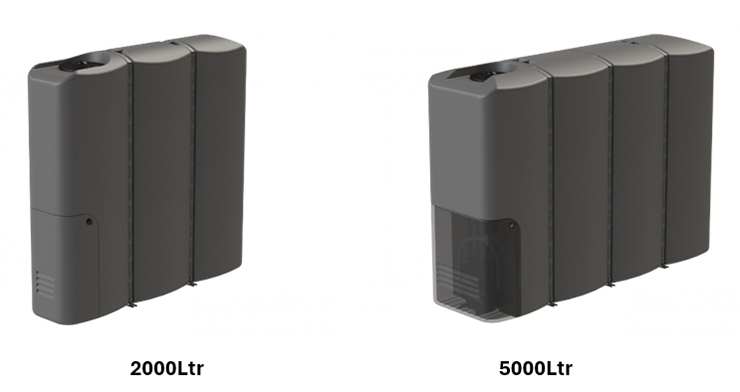Detention Tanks in Auckland
Detention Tanks in Auckland – What Homeowners Need to Know
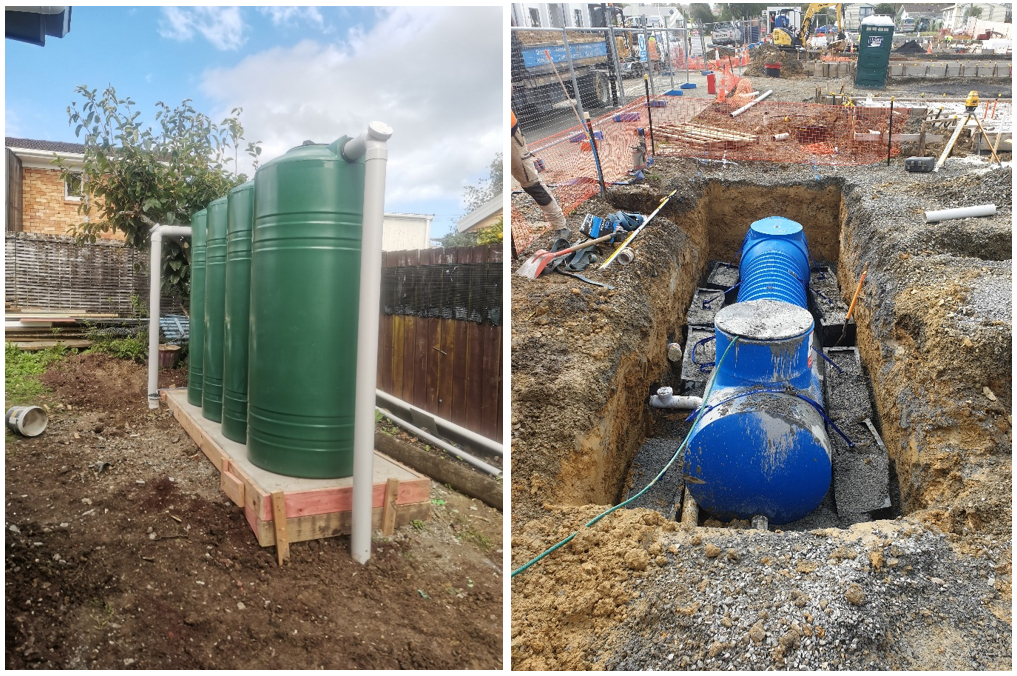

When Auckland is hit with heavy rain, it doesn’t take long before drains are overloaded, manholes bubble, and streets start to flood. If you’re planning a new build or extension, you’ve probably heard about detention tanks. But what exactly are they, why are councils requiring them, and how do they protect your property?
Let’s break it down in plain English, with local expertise from AllGo Plumbing & Drainage Ltd.
Allgo Plumbing & Drainage work in closely with Storm water engineers to come up with designs and get them submitted to council and get approval for installation.
Slim line detention tanks Allgo Plumbing are delivering ready for installation.
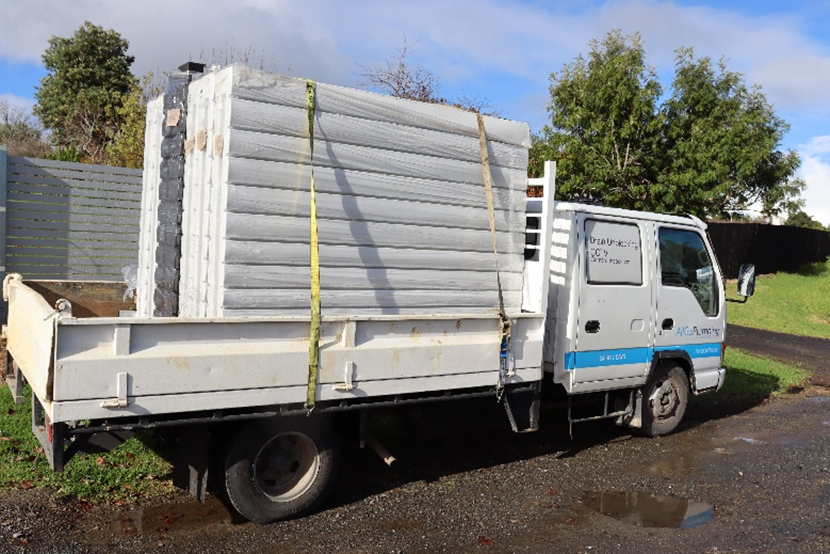

What Is a Detention Tank?
At its core, a detention tank is a hydraulic attenuation device. Unlike a retention tank, which stores water for later use, a detention tank’s purpose is to delay and control the flow of stormwater into public infrastructure.
Key differences:
- Detention tank: Holds water temporarily and uses a controlled outlet (orifice plate) to release it at a calculated rate.
- Retention tank: Stores water permanently for reuse e.g., toilet flushing, irrigation.
- Dual-purpose tank: Combines both, providing compliance (detention) and sustainability benefits (retention).
Auckland Council’s technical guideline AC2264: On-site Stormwater Tanks sets out requirements for these systems. Engineers often size tanks based on the 2-year and 10-year ARI (Average Recurrence Interval) storm events.
Example: In Howick, a 300m² roof required a detention tank sized for a 10-year ARI storm. Without it, runoff exceeded council thresholds.
Case Study: In Remuera, AllGo Plumbing installed a dual-purpose polyethylene tank. The detention chamber managed stormwater surges, while the retention side reduced water bills through irrigation supply.
Below you will find a diagram pertaining to atypical detention tank ie a water tank.
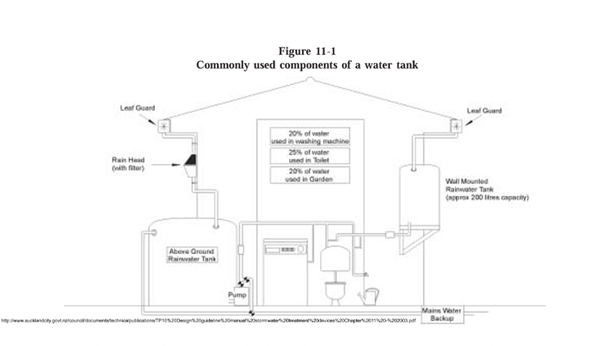

Do You Need a Detention Tank in Auckland?
Whether you need a detention tank comes down to impervious surface area and consent conditions.
Auckland Council often mandates detention tanks when:
- Impermeable coverage exceeds thresholds in the Auckland Unitary Plan.
- Developments fall within the Stormwater Management Area Flow Overlay.
- Subdivisions create cumulative runoff impacts.
Plan Change 54 simplified some processes, but building consent under the Building Act 2004 is still required in most cases.
Consent timelines: Building consent for stormwater detention tanks typically takes 2–6 weeks, depending on council workload.
Example: In Mangere East, a homeowner doubling their roof area was required to install a detention tank to match post-development runoff to pre-development levels.
Case Study: In Clevedon, clay soils prevented soakage. Council required an engineered detention solution. AllGo Plumbing & Drainage Ltd designed and installed a compliant system, allowing the build to progress.
How Detention Tanks Work on Your Property
A 200m² roof can generate 1,000 litres of water from just 5mm of rainfall (NIWA, 2023). If released instantly, that surge spikes downstream flows. Detention tanks reshape this curve.
They use a storage chamber to capture water and a restrictor orifice (or vortex flow controller) to meter it back into council pipes at a safe discharge rate. This process is known as hydraulic attenuation.
Example: In Parnell, AllGo Plumbing fitted a slimline tank with a calibrated outlet. Instead of water hitting the network in 15 minutes, discharge stretched over 3 hours.
Case Study: In Mt Roskill, an underground concrete tank with dual chambers and inspection risers satisfied both engineering and maintenance requirements.
Benefits of Installing a Detention Tank
Stormwater detention tanks aren’t just about ticking a council box, they protect property, infrastructure, and waterways.
Benefits include:
- Flood protection: Reduces garage and basement inundation risk.
- Compliance assurance: Meets Auckland Council and Master Plumbers NZ standards.
- Environmental protection: Reduces erosion by lowering peak shear stress in streams.
- Resilience: Prepares homes for climate change-driven rainfall.
Local NZ Insurers such as often highlight unmanaged stormwater as a top property risk. Having detention controls may help retain property value and insurability.
Example: In Mission Bay, AllGo installed a detention tank that solved ongoing garage flooding.
Case Study: In Takanini, staged detention tanks cut downstream peak flows by 40%. AllGo Plumbing delivered the project to meet council’s hydraulic neutrality requirement.
Choosing the Right Detention Tank
Tank selection depends on hydrology and council rules. Engineers assess runoff coefficients, time of concentration, and design storm intensity. Allgo Plumbing can design in conjunction with a stormwater engineer.
- Slimline above-ground polyethylene tanks: generally, from $5,000–$7,000 installed.
- Large underground concrete tanks: often $10,000–$15,000+ installed, depending on excavation and access.
Why it matters: The wrong choice may fail inspections or waste money. Tanks must suit both the site and consent requirements.
Example: In Epsom, a slimline polyethylene tank was installed in a small back yard (tight space).
Case Study: In Mt Wellington, underground concrete tanks under parking bays met load-bearing needs. The installation was handled by AllGo Plumbing & Drainage Ltd, ensuring compliance.
Frequently Asked Questions About Detention Tanks
Detention slows and meters flow; retention stores for reuse.
More Helpful Questions About Detention Tanks in Auckland
They don’t stop rain from falling, but they do slow down how fast it enters the council stormwater system. That means less chance of water backing up in your driveway, garage, or garden during heavy downpours. Only if maintained
Professional Installation and Support in Auckland
Detention tanks aren’t DIY jobs. They require hydraulic design, council approvals, and licensed installation, with a storm water management plan.
Why choose AllGo Plumbing & Drainage Ltd:
- We can organise storm water management plan and design for your install with an engineer
- Correct hydraulic sizing and placement.
- Seamless consent paperwork handling.
- Integration with downpipes, gully traps, and stormwater laterals.
- Ongoing support with CCTV and maintenance.
Costs & timelines:
- Residential installs typically cost $4,000–$10,000 (prepping & pouring concrete pad for detention tank, the supply and install from various sizes: 1000Ltr up to 5000Ltr).
- Slimline tanks: faster and more affordable.
- Underground tanks: more complex, takes some planning, and requires excavation.
- Disclaimer: Costs and timelines vary by property, soil, and council overlays.
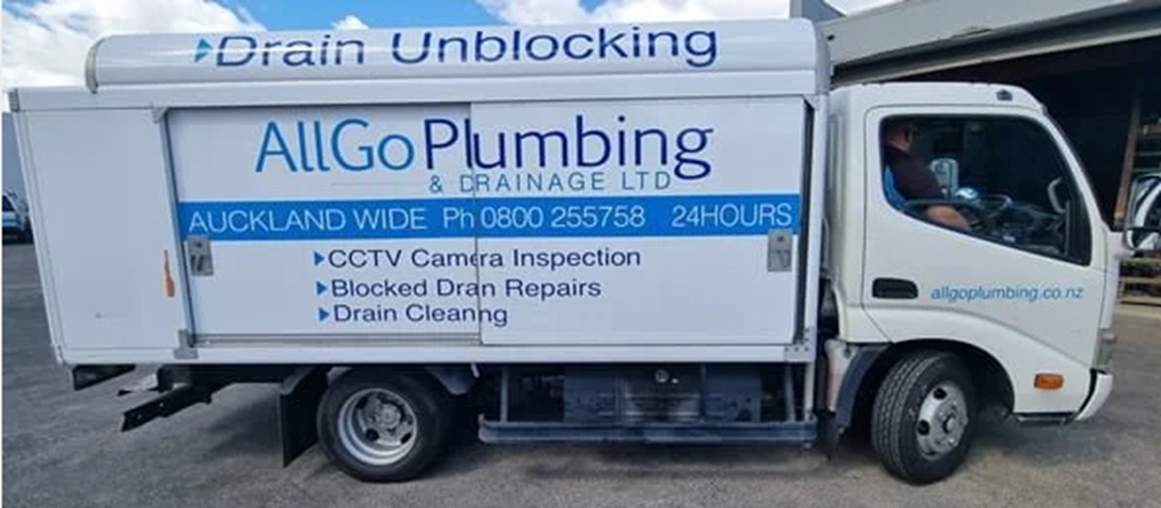

AllGo Plumbing is a proud Master Plumbers member, backed by one of NZ’s most trusted trade associations. Our team is fully registered with the PGDB and experienced in Auckland Council approvals, so your project is compliant from start to finish.


Looking for a Master Plumber, Gasfitter or Drainlayer – Welcome to AllGo.
Every property is unique. Roof size, slope, soil type, and overlays all influence requirements. The best way forward is to speak with our team of registered drainlayers. You can reach us directly via our contact page or call 0800 255758 , we’re a real Auckland business, servicing Remuera, Henderson, Mt Albert, Flat Bush, Westgate, Manukau, Howick, Buckland’s Beach, Beachlands, East Tamiki and beyond.
If it has Water or a Sewer, we do it – Auckland Wide.
Call the AllGo Plumbing experts at 0800 255 758, or contact us below.




